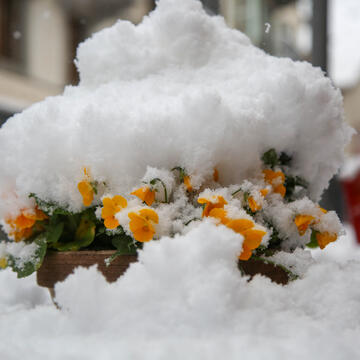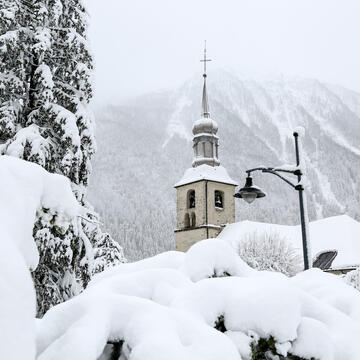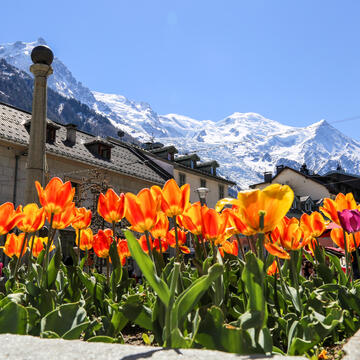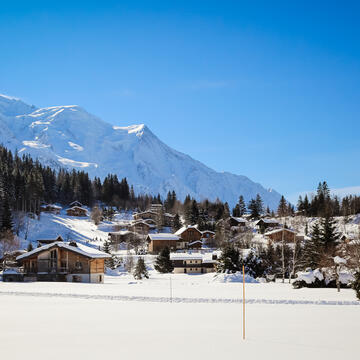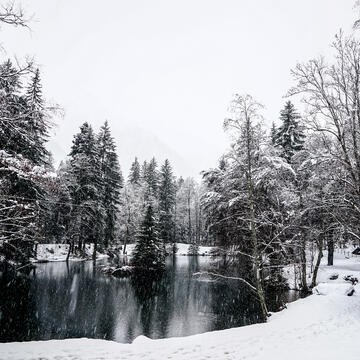Geography and climate
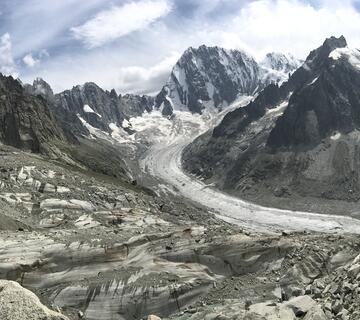
Geography
The Chamonix-Mont-Blanc Valley lies in the western and northern part of the Alps, 15km from Switzerland via the Col des Montets, and 15km from Italy via the Mont Blanc tunnel. The point where these three borders meet is at the summit of Mont Dolent (3820 m).
This valley, made up of Servoz, Les Houches, Chamonix, Argentière and Vallorcine, is dominated by Mont Blanc, the highest peak in Western Europe at 4805m. The altitude of the Chamonix-Mont-Blanc valley varies between 758 and 4805 metres.
The Valley is greatly appreciated by enthusiasts of mountaineering and mountain sports in general. But, with its diversity of villages and its natural assets, it offers numerous activities for a wide range of people, from the family to the adventurer and people who want leisure and relaxation to those who are keen on discovering new things and new experiences.
Chamonix and its valley are dominated by the Mont-Blanc chain to the south and the Aiguilles Rouges (red peaks) to the north.
The valley measures 17 km, from the Col des Montets at the northernmost point to the Taconnaz torrent. The town-center is located at an altitude of 1035 meters, the highest village at the top of the valley is Le Tour (1462 meters).
The Arve, the main river of the upper Savoy, takes its source at the Col de Balme and flows a distance of 107 km through the Chamonix-Mont-Blanc valley and on down to Geneva where it joins the Rhône.
Climatic data
The Valley has a mountain climate. Winter is cold with snowfall, contrasting with a summer that is generally pleasant, with temperatures regularly reaching 30°C.
| Temperatures | Minimum average | maximum average |
|---|---|---|
| December-January | -7°C / -8°C | +1°C / +2°C |
| February-March | -7°C / -3°C | +4°C / +7°C |
| June-July | +7°C / +9°C | +20°C / +24°C |
| August-September | +8°C / +6°C | +22°C / +18°C |
© Météo France. Meteo France forbids any copying of this information.
